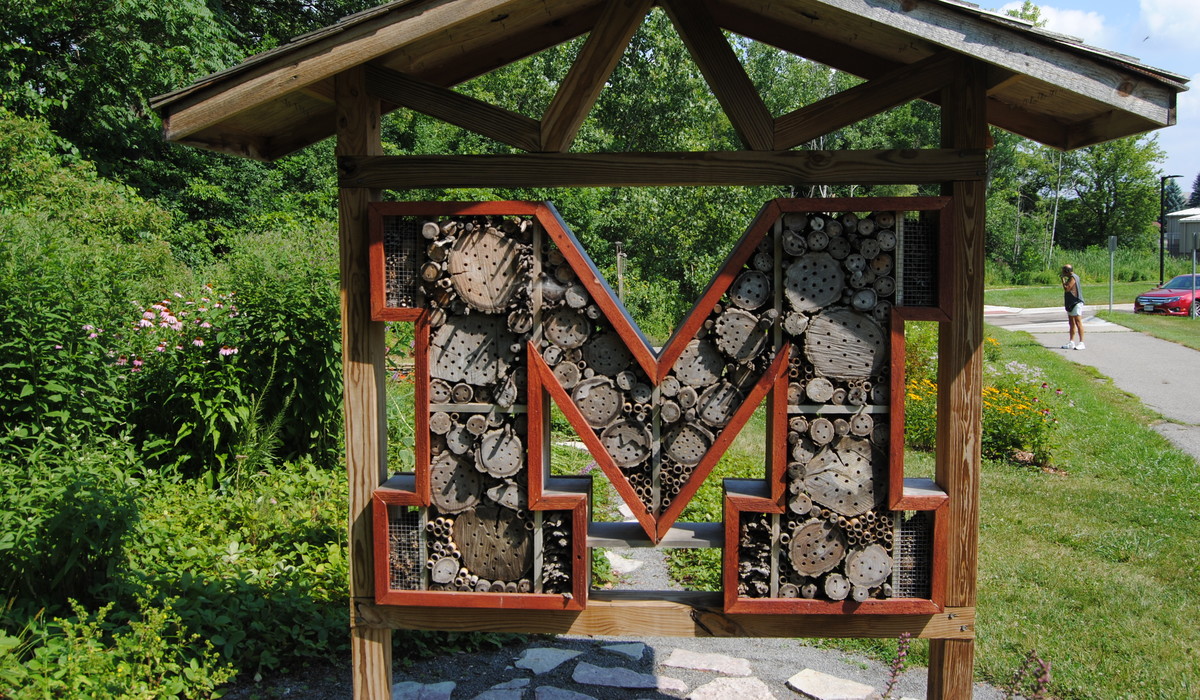Walking into the Environmental Interpretive Center (EIC) at the far end of UM-Dearborn’s campus is like entering a national park’s educational facility. Greeting visitors is a display of colorful, hand-carved wooden birds—cardinals, warblers, ducks, and robins—as well as exhibits on the River Rouge watershed and coyote and red fox footprints.
Most entertaining, however, is a group of six wild turkeys that recently took up residence on the outdoor patio. Strutting around the picnic tables, they peck at seeds that staff have left for the myriad birds that live in the 300-acre forest behind the EIC.
“We are not sure what to do about them,” says Mike Perrin, the center’s administrative manager. “They have gotten quite comfortable hanging out here and eating all the food.”
Each year, nearly 10,000 regional schoolchildren pass through the EIC—or “the gateway to the forest,” as Perrin describes the building, which also boasts classrooms and laboratories. “We have a lot of children who have never been in a forest and are scared of what they might confront,” says Perrin, which is why the staff teach the students on the K-12 class trips a bit about the natural habitat before they venture outside.
In 1959, the Ford Motor Co. donated 210 acres of the Henry Ford estate to U-M for the Dearborn campus. One-third of that property was designated a natural and historic area. Today, that 75 acres, as well as the adjoining acreage of the Henry Ford estate, make up what the EIC calls the “Environmental Study Area.” Its forest and fields boast 250 species of birds (many who stop to nest or rest while migrating) as well as numerous species of wildflowers, mammals, reptiles, and trees. In 2001, the EIC launched with the mission of providing schoolchildren and the community with hands-on discovery education programs.
Activities in the area occur during all seasons. In the autumn, visitors can join in a nighttime owl walk, an afternoon mushroom tour, or a fall colors stroll. In February and March, volunteers learn how to identify and tap maple trees at one of the center’s syrup sessions. And in the coming months, the EIC is inviting visitors to a number of workshops where they can learn to build an insect hotel for their backyard. One such shelter—a “birdhouse for insects”—is located just outside the EIC and shaped like a Block M.
Go Pollinators!
Jennifer Conlin, ’83, is the deputy editor of Michigan Alumnus.





